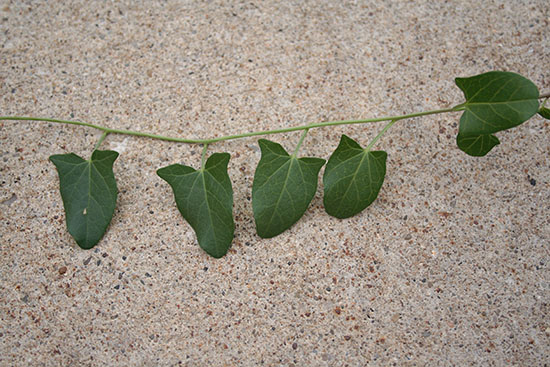Issue 6, June 4, 2018
Bindweed: The Vines that Bind (to Turf and Ornamentals)
My morning commute was filled with flowers today. Bindweed is in full bloom in many of the lawns along my regular route. From a distance, it is a pretty little plant. However, if it is growing in your lawn or garden, you may have other less favorable things to say about this persistent and difficult to manage perennial weed.

Bindweed blooming in turf.
Proper identification is critical to good weed control as is scouting often for emerging weed issues. Need some help identifying bindweed? Here is a brief description of the two commonly found types we have in Illinois. Other weedy vines such as morningglories, honeyvine milkweed, and wild buckwheat may also be found in lawns and gardens. As with all broadleaf weeds, leaf arrangement, flower type and the presence of underground structures such as rhizomes or tubers all play a key role in identification.
Hedge bindweed (Calystegia sepium) is a perennial vine that spreads by rhizomes. The leaves are alternate on the stem and are distinctly triangular in shape with a pointy tip. The leaf base is cut squarely. The flowers appear May to September, are white to pink, and funnel-shaped like that of morningglory. Bindweed is often mistaken for morningglory which is an annual weed. Initially, it may not be perceived as much of a problem, although, the rhizomes can help this vine to spread quickly.

Bindweed leaves are alternate on the stem.
Field bindweed (Convolvulus arvensis) is similar to hedge bindweed except the leaves are arrowhead shaped with a rounded tip. Also, the leaves are smaller and the leaf bases are rounded with outwardly divergent lobes. I try to keep the two straight by thinking “hedges have edges". Field bindweed is a rhizomatous perennial as well.

Field bindweed flowers up close.
Controls for vines such as bindweed include repeated pulling or cutting back, mowing, mulching, and herbicides. In a turf situation, grass should be properly maintained and mowed as high as possible. These vines have a difficult time growing in thick, lush turfgrass. Central Illinois has been fairly dry lately and turf growth has slowed. Bindweed tolerates drought quite well. These factors make it more visible now. In addition to cultural controls, postemergent herbicides can be used. Ones that provide at least some control of these vines include but are not limited to the following: 2,4-D, carfentrazone, quinclorac, dicamba, oxyfluorfen, and triclopyr.
Glyphosate may also be used for spot applications as it is a non-selective herbicide. If bindweed is growing within other plants, extra caution should be taken. Protect plants by covering them with plastic. Glyphosate may be carefully painted or dabbed onto the leaves so that the application is precise. Be sure to carefully read and follow all label directions. Repeated applications may be necessary. Spring and fall applications of postemergent herbicides may be necessary for complete control. Preemergent herbicides are not particularly effective against perennial weeds. (Michelle Wiesbrook)
Author:
Michelle Wiesbrook